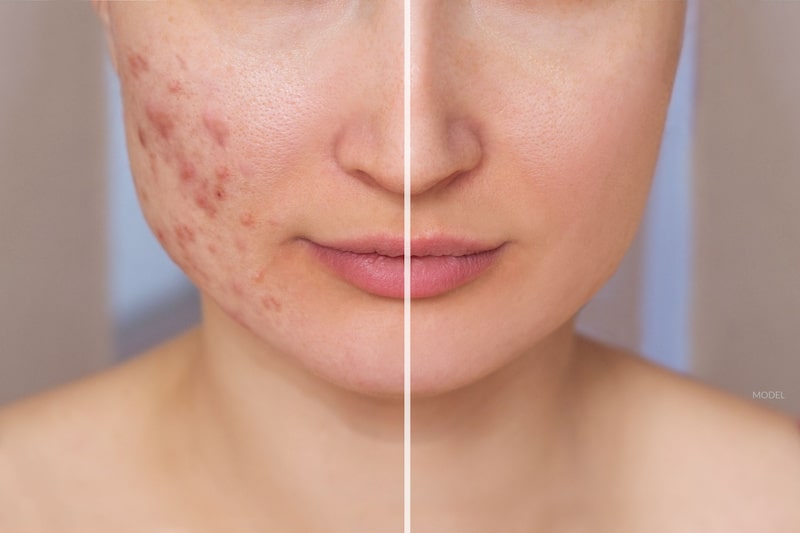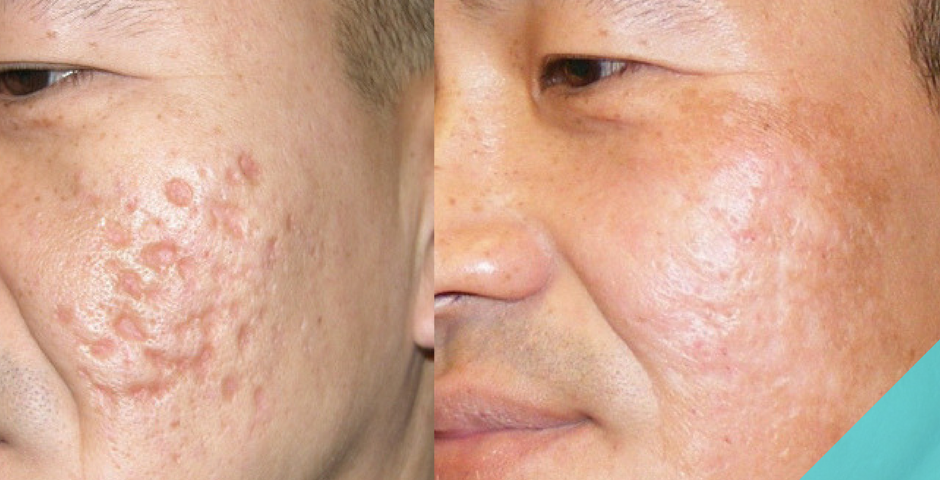Targeted Acne and Acne Scars Treatment: Recover Your Clear Skin
Targeted Acne and Acne Scars Treatment: Recover Your Clear Skin
Blog Article
Comprehending the Different Skin Problem and Efficient Treatment Options for Acne Marks
Acne scars represent a complex interplay of skin disease that dramatically impact people' self-worth and general skin health and wellness. Understanding the distinct sorts of acne scars-- hypertrophic and atrophic-- along with their underlying causes, is pivotal for determining efficient therapy approaches. Various restorative options exist, ranging from advanced skin-related procedures to natural solutions. Nevertheless, the efficacy of these treatments often depends upon customized assessments by certified experts. As we check out the landscape of acne scar monitoring, it comes to be evident that the trip toward more clear skin might include even more than just topical services.
Sorts Of Acne Scars
The 2 primary groups of acne scars are atrophic and hypertrophic scars. These scars are further classified into three subtypes: ice pick marks, which are deep and narrow; boxcar marks, which are larger and have well-defined edges; and rolling scars, which produce a wave-like look due to uneven skin structure.
In contrast, hypertrophic marks result from an overflow of collagen throughout the healing process, bring about raised locations on the skin. These scars are frequently firm and can vary in color, often showing up red or darker than the bordering skin.

Root Causes Of Acne Scarring
Marking takes place as an outcome of the body's all-natural recovery feedback to swelling and injury triggered by acne lesions. When acne types, it triggers an inflammatory feedback, resulting in the release of various cytokines and development factors that promote recovery. Nevertheless, this procedure can sometimes result in extreme cells formation or inadequate repair work, causing marks.
The primary sources of acne scarring include the extent of the acne itself, period of the sores, and individual skin types. Severe inflammatory acne, such as cysts and nodules, is most likely to cause scarring as a result of much deeper cells damages. Furthermore, incorrect handling of acne lesions, such as squeezing or choosing, can intensify tissue injury and swelling, raising the possibility of scarring.
Hereditary tendency likewise plays a significant duty; individuals with a household background of scarring go to a greater threat. Moreover, skin type and shade can influence mark formation, as darker complexion might experience post-inflammatory hyperpigmentation, while lighter skin may develop atrophic scars.

Treatment Options for Scarring
Effective treatment alternatives for acne scarring differ depending on the type and seriousness of the marks. Generally classified into atrophic, hypertrophic, and keloid marks, these problems call for tailored techniques for optimal results.
For atrophic scars, which are identified by a loss of cells, therapies such as chemical peels, microdermabrasion, and laser treatment are commonly employed. These methods advertise skin renewal and promote collagen manufacturing, thereby improving skin structure. Subcision, a minimally invasive treatment, can additionally work by damaging up coarse bands beneath the skin.
Hypertrophic and keloid marks can be extra testing to deal with. Choices include corticosteroid shots to reduce inflammation and squash the marks. acne treatment for sensitive skin. In some situations, cryotherapy or laser treatment may be suggested to reduce their appearance
Surgical options are available for severe scarring, where excision or skin grafting may be required. It's vital for people to seek advice from with a dermatologist to evaluate their certain scar kind and go over the most suitable treatment plan. Incorporating numerous treatments frequently produces the very best end results, ensuring that each client's distinct skin disease is addressed effectively.
Home Treatments and All-natural Solutions
All-natural remedies and natural home find out here remedy can provide an obtainable technique for people seeking to enhance the appearance of acne marks. Different components discovered in the home kitchen area have demonstrated prospective advantages in improving skin texture and advertising recovery.
Using fresh aloe vera gel directly onto the scars can aid improve skin hydration and lower redness. Honey has natural antibacterial and moisturizing high qualities that can aid in scar healing.
One more efficient option is lemon juice, which serves as a natural exfoliant and can lighten hyperpigmentation. It should be used meticulously, as it might create photosensitivity. Oatmeal masks are also beneficial; their mild peeling can aid remove dead skin cells while soothing irritability.
Crucial oils, such as tea tree oil and lavender oil, can better sustain mark healing due to their antimicrobial properties. It is critical to carry out a spot test before applying any type of treatment to make certain there are no damaging responses. These all-natural services can be a complementary strategy in the journey to reduce acne marks.
Protecting Against Future Scarring
Adopting an aggressive method to skincare can significantly minimize the threat of establishing future acne scars. Routine cleansing, exfoliation, and hydration can aid maintain skin health and avoid blocked pores.
Furthermore, avoiding the lure to choose or press acne sores is essential, as this can cause inflammation and succeeding scarring. Instead, people ought to concentrate on using topical therapies that advertise healing and minimize swelling. Active ingredients such as salicylic acid, benzoyl imp source peroxide, and retinoids are understood for their effectiveness in managing acne and reducing marks.

Lastly, maintaining a healthy and balanced diet abundant in antioxidants and remaining moisturized assistances skin regeneration. By applying these preventative procedures, individuals can significantly reduce their risk of future scarring and advertise overall skin health.
Final Thought
To conclude, a thorough understanding of acne marks, including both hypertrophic and atrophic types, is vital for reliable treatment strategies. Customized treatments, consisting of professional therapies and home treatments, can significantly improve skin look and texture. Safety nets likewise play a crucial function in reducing future scarring. Examination with a skin doctor stays necessary to devise personalized techniques that consider specific skin kinds and scar intensity, inevitably improving the efficiency of scar monitoring techniques.
Acne marks represent a complex interaction of skin conditions that dramatically effect people' self-esteem and total skin health. The two key classifications of acne marks are hypertrophic and atrophic scars. These scars are further identified right into official site 3 subtypes: ice pick scars, which are deep and narrow; boxcar marks, which are wider and have distinct sides; and rolling scars, which produce a wave-like look due to unequal skin texture.
A detailed appointment with a skin doctor can help identify the most appropriate intervention, taking into account the individual's skin type, mark severity, and total skin health.
Examination with a skin doctor stays essential to design tailored strategies that consider specific skin kinds and mark intensity, ultimately enhancing the efficacy of mark monitoring techniques.
Report this page